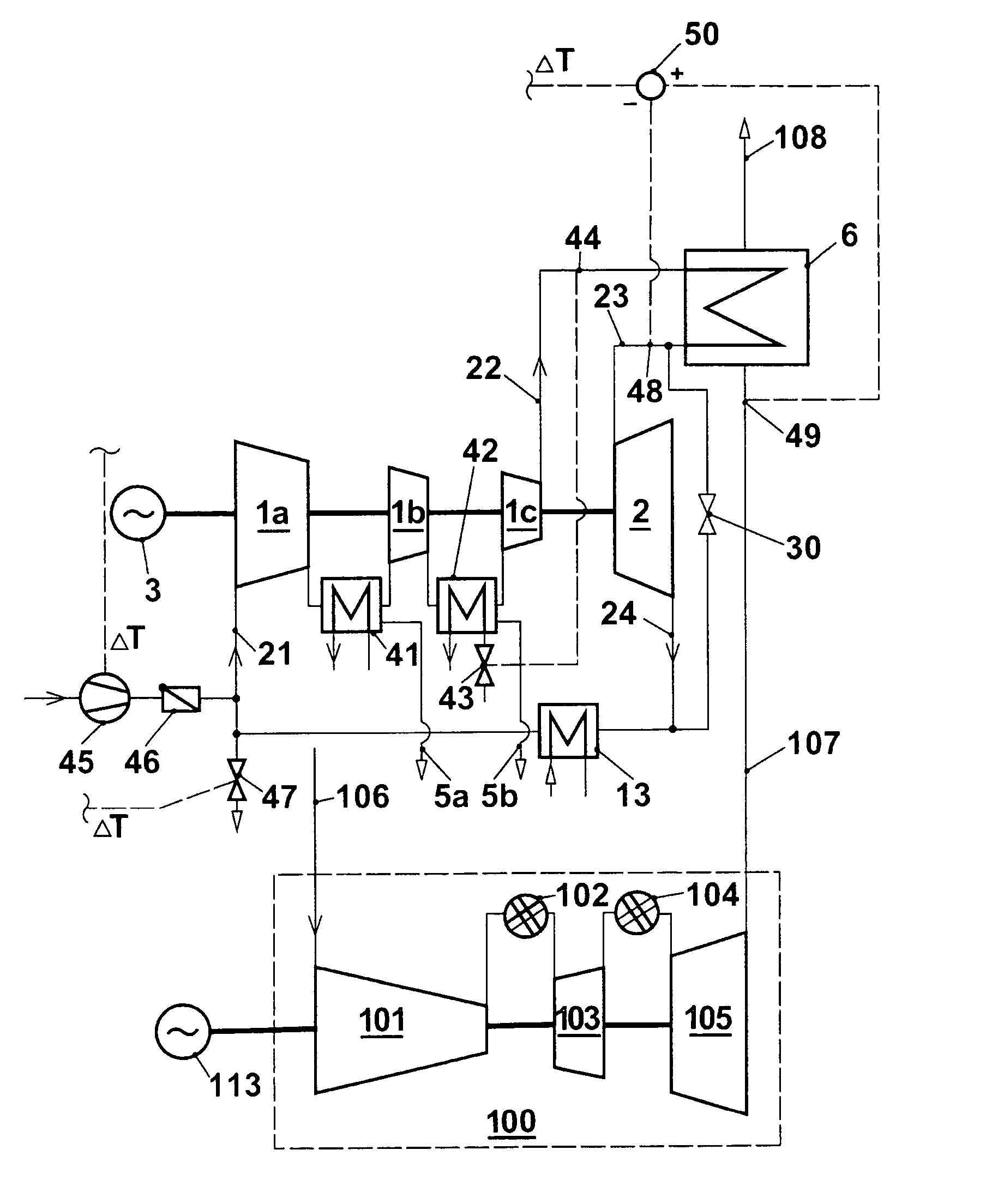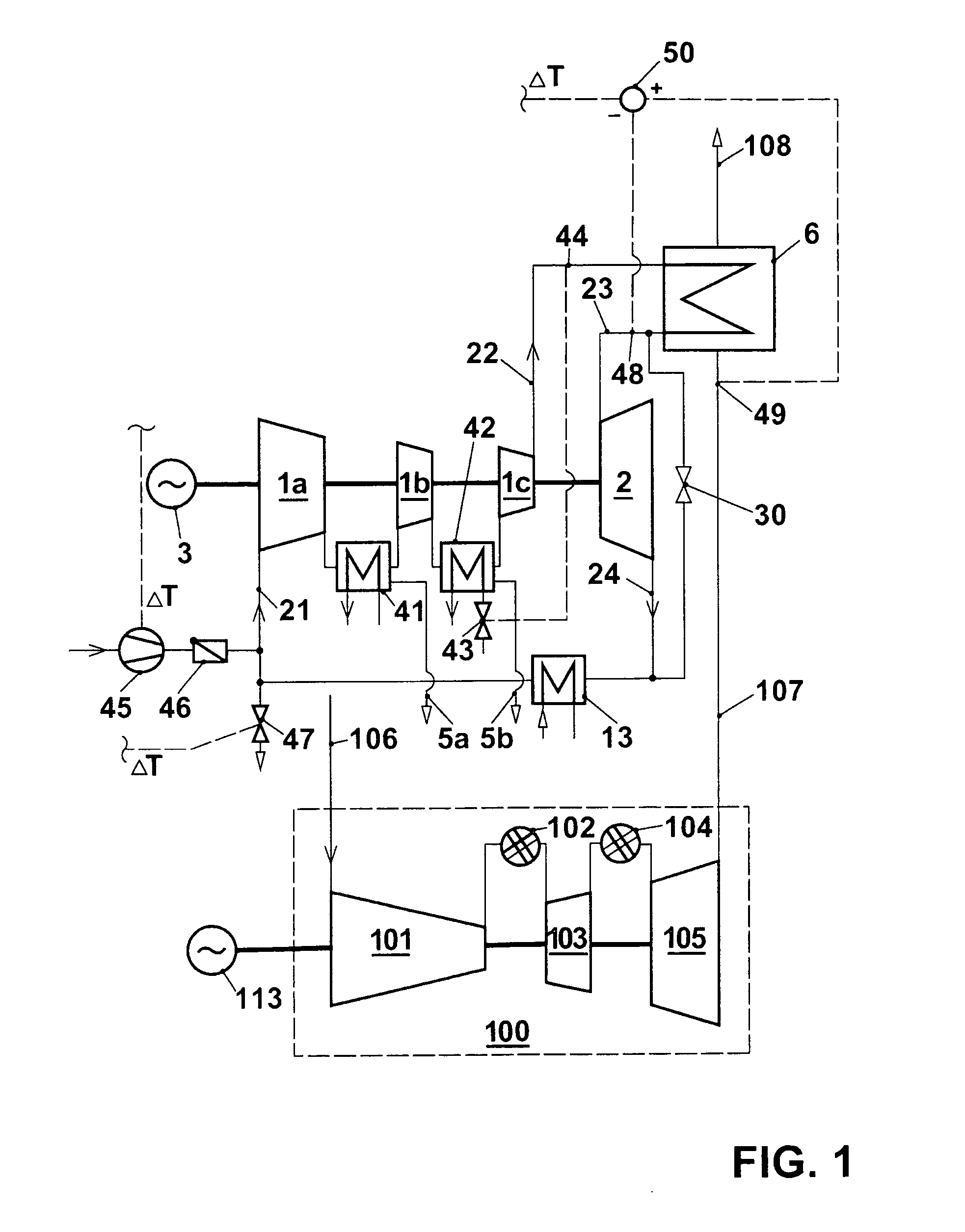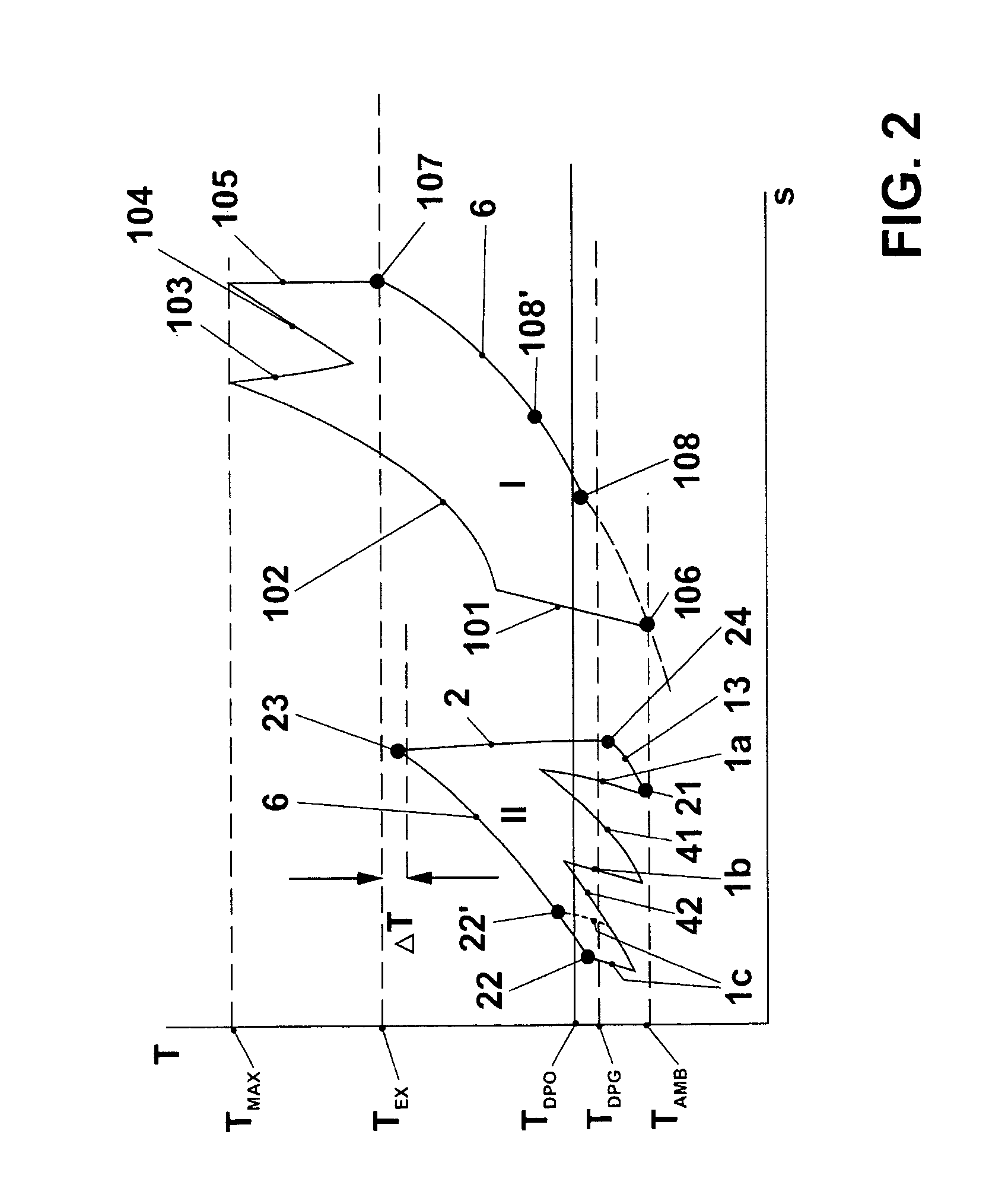Power generation plant
a power generation plant and power generation technology, applied in the direction of machines/engines, sustainable transportation, mechanical equipment, etc., can solve the problems of secondary machine not being able to reach the possible top process temperature, secondary machine cannot operate normally below, and both types of construction have comparatively poor scaleability of operation, so as to achieve high flexibility in the utilization of waste hea
- Summary
- Abstract
- Description
- Claims
- Application Information
AI Technical Summary
Benefits of technology
Problems solved by technology
Method used
Image
Examples
Embodiment Construction
[0017] A power station plant according to the invention is shown in FIG. 1. As primary machine, a gas turboset 100 drives a generator 113. Without constituting a restriction, this gas turboset is one with sequential combustion, as is well known from EP 620 362 and numerous publications based thereon. Without going into details, its basic function is briefly explained. A compressor 101 and two turbines 103 and 105 are arranged on a common shaft. The compressor 101 draws in an air quantity 106 from the environment. Fuel is admixed with the compressed air in the first combustion chamber 102 and burned there. The flue gas is partly expanded in the first turbine 103, for example at a pressure ratio of 2. The flue gas, which still has a high residual oxygen content of typically over 15%, flows into a second combustion chamber 104, where further fuel is burned. This reheated flue gas is expanded in the second turbine 105 approximately at ambient pressure—apart from pressure losses of the e...
PUM
 Login to View More
Login to View More Abstract
Description
Claims
Application Information
 Login to View More
Login to View More - R&D
- Intellectual Property
- Life Sciences
- Materials
- Tech Scout
- Unparalleled Data Quality
- Higher Quality Content
- 60% Fewer Hallucinations
Browse by: Latest US Patents, China's latest patents, Technical Efficacy Thesaurus, Application Domain, Technology Topic, Popular Technical Reports.
© 2025 PatSnap. All rights reserved.Legal|Privacy policy|Modern Slavery Act Transparency Statement|Sitemap|About US| Contact US: help@patsnap.com



